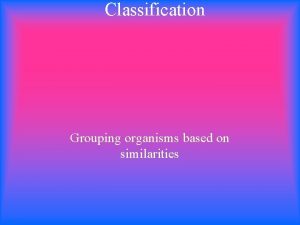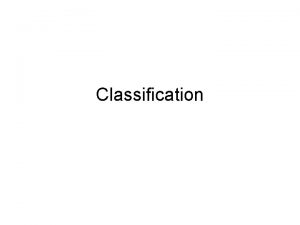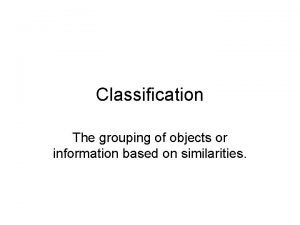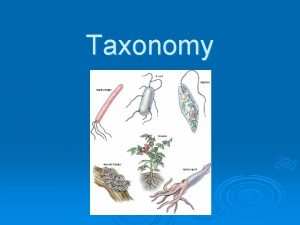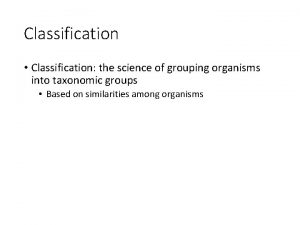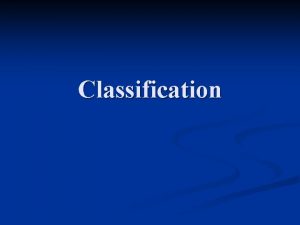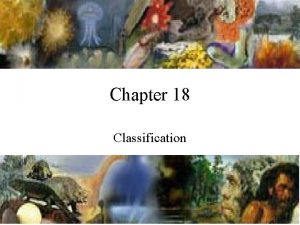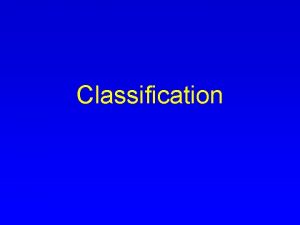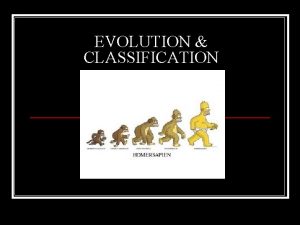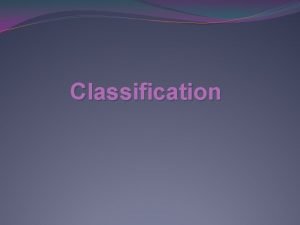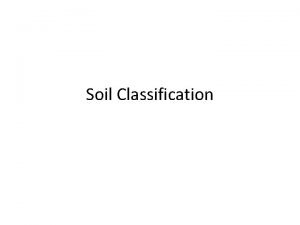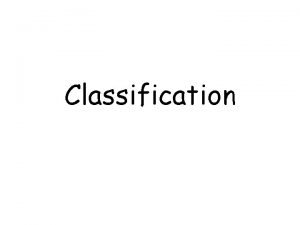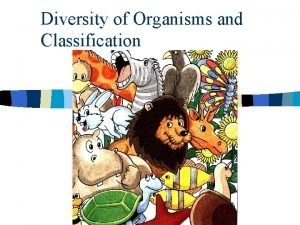Classification Quarter 4 week 1 Classification grouping organisms












- Slides: 12

Classification Quarter 4 week 1

Classification— --grouping organisms so they are easy to identify and organize taxonomy—branch of biology that names and groups organisms Aristotle was the first to do this. He grouped all organisms into plants and animals. He then divided these groups based upon size and structure

Classification • As new organisms were discovered they were named, but over hundreds of years problems began to develop. • --common names—didn’t make sense (jellyfish is not a fish) or they change from area to area (dog, perro, etc. ) • --Aristotle’s groups were not adequate enough

Classification • A man named Linnaeus (1707 -1778) responded to this need for organization and devised a system based upon hierarchal categories. • --he used morphology (form and structure of organisms) to categorize • --his system has seven levels each more specific than the last

Classification • • Kingdom Phylum Class Order • Family • Genus • Species **You need to memorize these!!** (A helpful way is: King Phillip Came Over For Good Spaghetti)

Classification • --Species is most specific and contains only one organism

Binominal Nomenclature • The second part of Linnaeus’ system was the species or scientific name. It is called Binomial nomenclature, which means twoname naming system • 1—group of similar organisms Genus (pl— genera) Homo • 2 -species identifier (descriptive word)species sapiens (means wise)

Binominal Nomenclature • (All scientific names must be underlined or italicized and genera names are capitalized. ) • Names are usually Latinized, because it is no longer used in conversation, so does not change.

Classification • --Biologists now use other things as well as morphology to determine classifications: • -phylogeny (evolutionary history of the organism) • -fossil record • -embryo patterns of development • -chromosomes (DNA and RNA) and proteins

Classification • Phylogeny has now become the way to classify, as a scientist takes all of the above things into consideration about an organism. • The information is put together to create a phylogenetic tree (shows evolutionary relationships) • --in this way an organism can be compared to both living and • extinct organisms. • --trees can be changed as new evidence is presented

Cladistics • Cladistics is a new way to look at phylogeny. This is where a certain feature of an organism is used to establish its evolutionary relationships. Organisms that share a similar characteristic probably inherited it from a common ancestor. • Ex. Feathers appear only in birds, so they probably evolved in that group.

Cladistics
 Quarter half time
Quarter half time 7 past half
7 past half The grouping of organisms based on similarities.
The grouping of organisms based on similarities. Taxonomy is the science of grouping and naming organisms
Taxonomy is the science of grouping and naming organisms Classify
Classify This is the study of grouping and naming organisms
This is the study of grouping and naming organisms English 5 quarter 4 week 1
English 5 quarter 4 week 1 English 9 quarter 2 week 3
English 9 quarter 2 week 3 Member of the same species
Member of the same species Unicellular multicellular organisms
Unicellular multicellular organisms Week by week plans for documenting children's development
Week by week plans for documenting children's development Classification is the grouping of objects based on
Classification is the grouping of objects based on How do cladograms and fanlike diagrams differ?
How do cladograms and fanlike diagrams differ?


